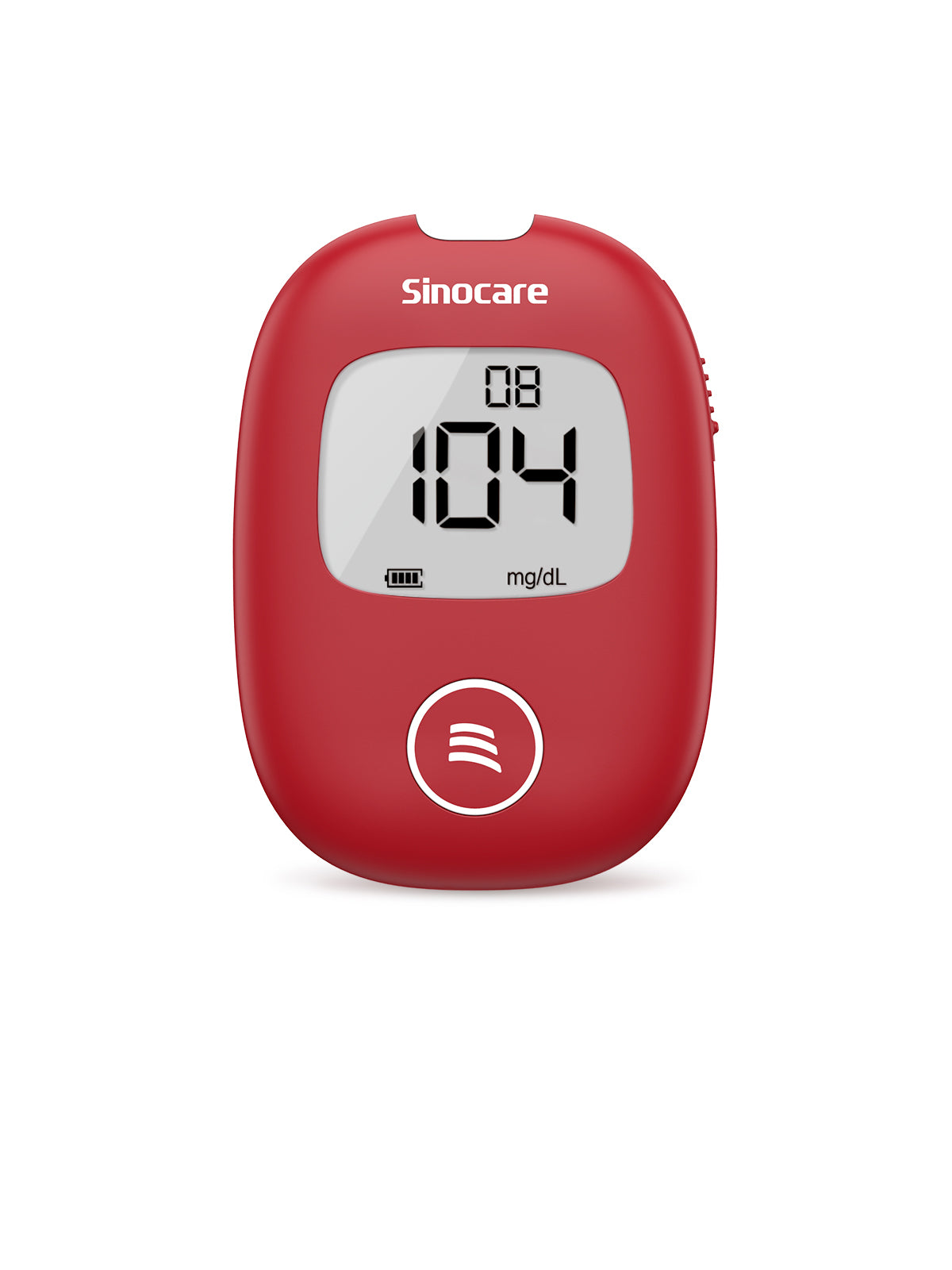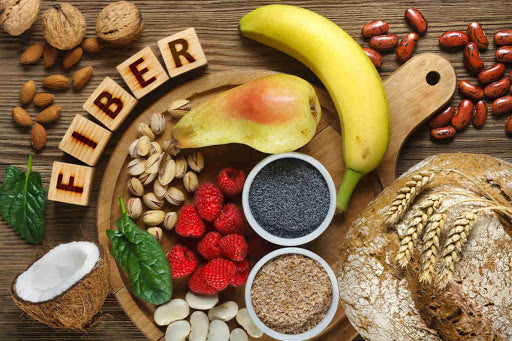Harvard University has conducted two large-scale studies on the relationship between cellulose and diabetes, each time more than 40,000 people participated. Studies have confirmed that people who regularly eat high-fat, low-fiber foods have a two-fold higher risk of diabetes than those who regularly eat low-fat, high-fiber foods. It is also rumored among Chinese people that dietary fiber can not only lose weight but also lower three highs. So what is the inextricable relationship between dietary fiber and diabetes?

First of all, let us popularize the relationship between dietary fiber and blood sugar.
- Definition and classification of dietary fiber
Dietary fiber (DF) is the general term for various types of cellulose present in food. According to solubility, dietary fiber can be divided into soluble dietary fiber and insoluble dietary fiber.
Soluble dietary fiber is mainly ① stored substances and secretions in plant cell walls ② part of hemicellulose ③ part of microbial polysaccharides ④ synthetic polysaccharides, such as gum, konjac polysaccharide, guar gum, arabinose and so on. Many experiments have shown that soluble dietary fiber can reduce the extent of postprandial blood sugar increase. After absorbing water, soluble dietary fiber becomes viscous and can wrap food to form a jelly. It not only delays the speed of food entering the intestines from the stomach, but also delays the absorption of starchy foods in the small intestine, thus preventing a sharp rise in blood sugar after eating.
Insoluble dietary fiber includes ① hemicellulose ② insoluble hemicellulose ③ lignin ④ resistant starch ⑤ some indigestible oligosaccharides ⑥ Maillard reaction products ⑦ Chitin contained in the epidermis of shrimps, crabs and other animals ⑧ plants Cell wall wax and keratin ⑨ indigestible cell wall protein.
- How does dietary fiber regulate blood sugar?
Long-term high blood sugar will destroy the internal environment of the human body, cause a series of biochemical and pathological changes, and affect the functions of various organs. High blood sugar can also cause macrovascular disease. Diabetic macrovascular disease includes atherosclerosis of the aorta, coronary artery, cerebral basilar artery, renal artery and peripheral arteries. Among them, atherosclerosis is more serious and has a high mortality rate. About 70% to 80% of diabetic patients die of diabetic macrovascular disease. This shows that proactively stabilize blood sugar at a normal level to prevent or delay the occurrence of complications.
Many medical studies have pointed out that intake of adequate dietary fiber is an important part of preventing high blood sugar. So how does dietary fiber regulate blood sugar?
- Block the absorption of glucose and lipids
Difficult to decompose, large volume of dietary fiber enters the gastrointestinal tract like a sponge - it absorbs water and swells into a gel shape, increases the viscosity of food, delays the emptying of the stomach, prevents it from entering the small intestine, and delays the intestine. The time for digestion and absorption in the tract provides a buffer time for the "evil" of excess glucose to prevent a sharp rise in blood glucose after a meal, thereby reducing blood glucose after a meal. After absorbing water, soluble fiber can also form a "separation layer" on the surface of the small intestine mucosa, which hinders the absorption of glucose and cholesterol in the intestine, and the unabsorbed glucose is excreted in the stool. Studies have also pointed out that insoluble dietary fiber can affect glucose absorption by shortening intestinal transit.
- Produce satiety
Studies have found that when food passes through the small intestine, a gastrointestinal hormone that can suppress appetite is released into the blood and binds to receptors in the hypothalamus to produce a feeling of fullness. Satisfaction can reduce the body's demand for food, which is conducive to diet control for patients with diabetes and obesity.
- Promote bowel movements and promote the formation of bowel movements
Dietary fiber can also promote bowel movements and promote the formation of bowel movements. This allows the glucose that has not had time to enter the blood to be excreted in time, maintaining the stability of blood sugar.
- Dietary fiber can increase insulin sensitivity
Dietary fiber can increase the sensitivity of peripheral tissues to insulin, improve insulin resistance, and lower blood sugar levels. The latest research believes that dietary fiber is the only factor related to insulin sensitivity, soluble dietary fiber has nothing to do with the risk of type 2 diabetes, and insoluble dietary fiber can improve insulin sensitivity.
- Reduce the activity of intestinal digestive enzymes
Foreign scholars have long confirmed that certain dietary fiber can inhibit α-amylase, prolong the reaction time with starch, thereby reducing the rate of glucose release.
- Promote the repair of islet function
A study on the effect of β-glucose in oats on pancreatic islet function confirmed that β-glucose in oats has a certain repair effect on damaged islet cells in rats.
In summary, dietary fiber can effectively control fasting blood glucose, postprandial blood glucose, glycosylated hemoglobin and lipid metabolism disorders, and reduce blood insulin elevation response. Increasing the intake of dietary fiber and magnesium can effectively reduce the risk of diabetes and reduce the mortality of diabetic patients. A large number of studies have shown that a diet with sufficient dietary fiber content has special effects in preventing or treating diabetes.
What are the foods rich in dietary fiber?
- Inulin
Inulin is recognized as the most effective source of dietary fiber in the industry. Inulin is a reserve polysaccharide in plants, mainly derived from plants. In foreign countries, chicory root is used as raw material to obtain inulin through spray drying and other steps after removing protein and minerals.
In China, the rhizome of Jerusalem artichoke (Jerusalem artichoke) is used as raw material to remove protein, gum, crude fiber and minerals, and then inulin is obtained through a series of production processes. The dietary fiber in inulin can effectively reduce postprandial blood sugar by 20-50%.
In addition, the prebiotics in inulin are not digested by the digestive juice in the digestive tract, but can be fermented into short-chain fatty acids by bifidobacteria and lactobacilli, which can reduce blood sugar. The prebiotics in inulin can also reduce the body's demand for insulin, which is conducive to the improvement of diabetes. Prebiotics can increase the body's sensitivity to insulin, and can also directly affect the function of pancreatic islet β cells and improve the regulation of insulin in the blood.
- Oat bran (skin)
Oat bran is the part of oats that contains the most dietary fiber, especially the most abundant β-glucan. β-glucan is a soluble dietary fiber. It is a known effective ingredient for lowering blood lipids and contributes to intestinal health. Oat fiber is known as "noble dietary fiber".
Oat bran is a kind of pure natural health functional food. It is an effective way to supplement water-soluble dietary fiber and insoluble cellulose. It is more natural and healthy than eating processed cellulose flakes, and it is cheaper.
The average daily intake of oat bran is 30-60g. It can be eaten as follows:
1) Add it when cooking porridge (add it in cold or warm water, stir well);
2) It can be brewed with boiling water, and it can be mixed with a small amount of milk, milk powder, soy milk or honey to drink, and the taste is better;
3) Add it to flour when making pasta, or sprinkle it on the surface of steamed buns and bread.
- Celery
Celery has the reputation of "medicine in the kitchen" and "medicinal celery". Most of the plant fiber contained in it is insoluble fiber, so it is easy to make people feel full and it is also very helpful for promoting gastrointestinal peristalsis. Celery also contains a chemical substance that can accelerate the decomposition and disappearance of fat. Therefore, celery is also a good product for weight loss.
Many people only eat celery stalks when eating celery, and discard the leaves. In fact, celery often uses only the stalk of celery, while the leaves are discarded. In fact, celery leaves contain a lot of vitamins and minerals. Celery has the most abundant fiber in the stem, which can increase bowel movements and make bowel movements smoother.
Tips: Kidney patients who want to limit potassium should avoid eating celery raw or drinking celery juice to avoid excessive intake of potassium ions.
- Bamboo shoots
Bamboo shoots contain a lot of crude fiber, which can stimulate gastrointestinal peristalsis, help digestion, and make people feel full. And bamboo shoots have the characteristics of low sugar, low fat, rich in plant fiber, can reduce the excess fat in the body, eat too much without gaining weight. In addition, bamboo shoots are rich in plant protein, vitamins, calcium, iron, phosphorus, carotene and other trace elements, which help enhance the body's immune function and improve disease prevention and disease resistance.
Bamboo shoots and ribs soup, cold bamboo shoots, and braised bamboo shoots are all nutritious and delicious cooking methods.
Tips: Patients suffering from gastric ulcer, gastric bleeding, nephritis, liver cirrhosis, enteritis, urinary tract stones, osteoporosis, and rickets should not eat more.
- Potatoes
The dietary fiber of potatoes such as purple potato and sweet potato can stimulate gastrointestinal motility, and the water-soluble fiber contained in it can maintain the elasticity and smoothness of blood vessels, prevent arteriosclerosis and lower cholesterol. In addition, potatoes are rich in oligosaccharides, which help probiotics and are beneficial to the health of the large intestine.
200g of sweet potatoes is about the calories of half a bowl of white rice or 2 slices of toast. If you eat sweet potatoes, you should lose the corresponding staple food.
The best cooking way to eat potatoes is steaming! Eat it with the skin, the fiber is richer and the effect of stimulating gastrointestinal peristalsis is the best!
- Guava (Guava)
Often eating guava can promote bowel movements. Guava is also rich in protein and vitamin C, vitamin A, B and trace elements calcium, phosphorus, iron, potassium and so on.
It is recommended to eat guava with the skin, as the skin contains more dietary fiber. If you are worried about pesticide residues, you can soak in clean water for 10 minutes, and then rinse with running water.
Tips: Guava seeds are hard to digest. If you have constipation symptoms, avoid eating them together.
- Dietary fiber is a double-edged sword, eating more is not beneficial
Although dietary fiber is good, a large amount of supplementation is also harmful~
1. Diabetes patients should not eat large amounts of dietary fiber, because dietary fiber retards the absorption of sugar and lipids, while blocking the absorption of some macro and trace elements. Therefore, when supplementing dietary fiber, vitamins and trace element mixtures should be supplemented.









Leave a comment
All comments are moderated before being published.
This site is protected by hCaptcha and the hCaptcha Privacy Policy and Terms of Service apply.